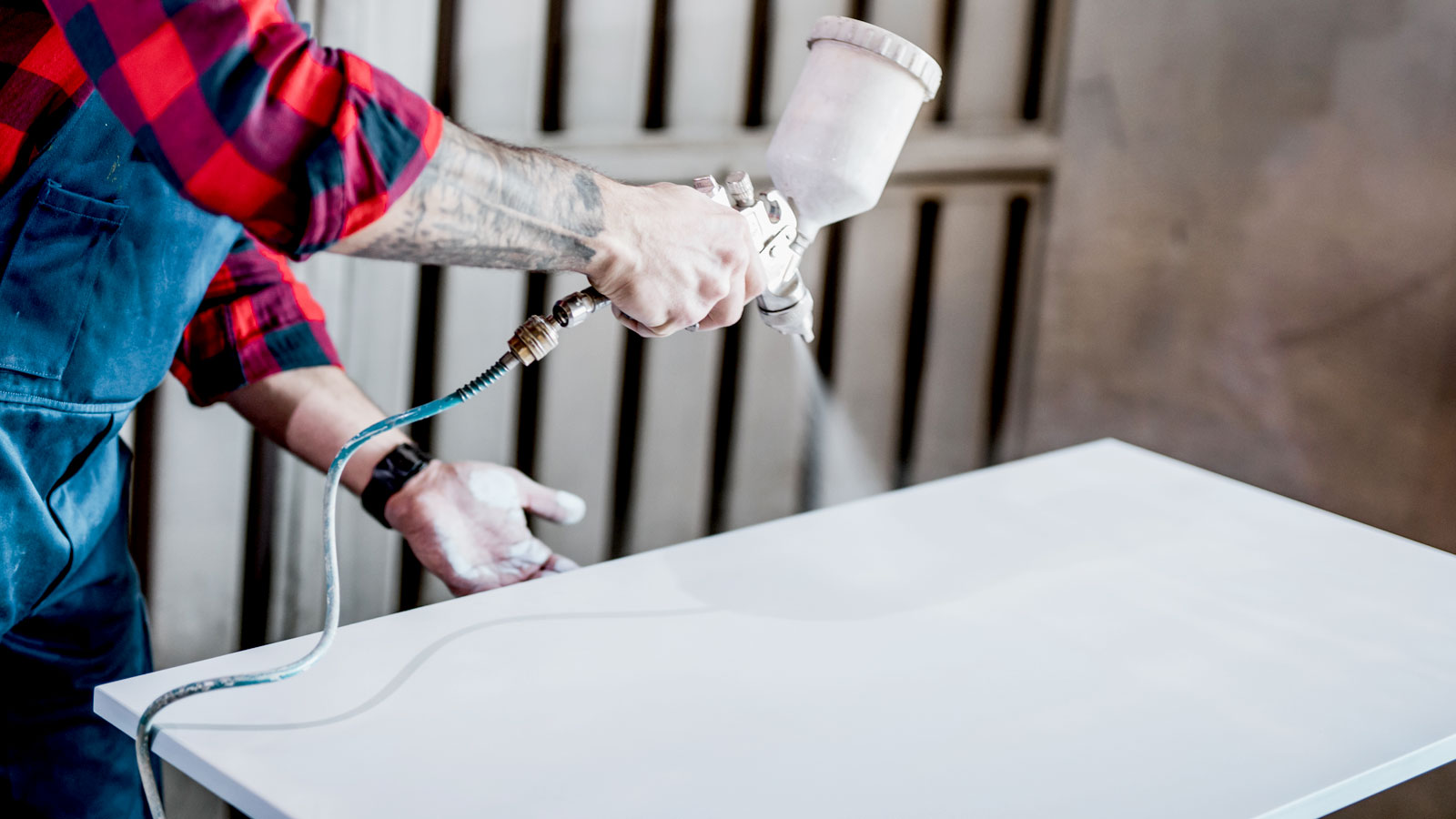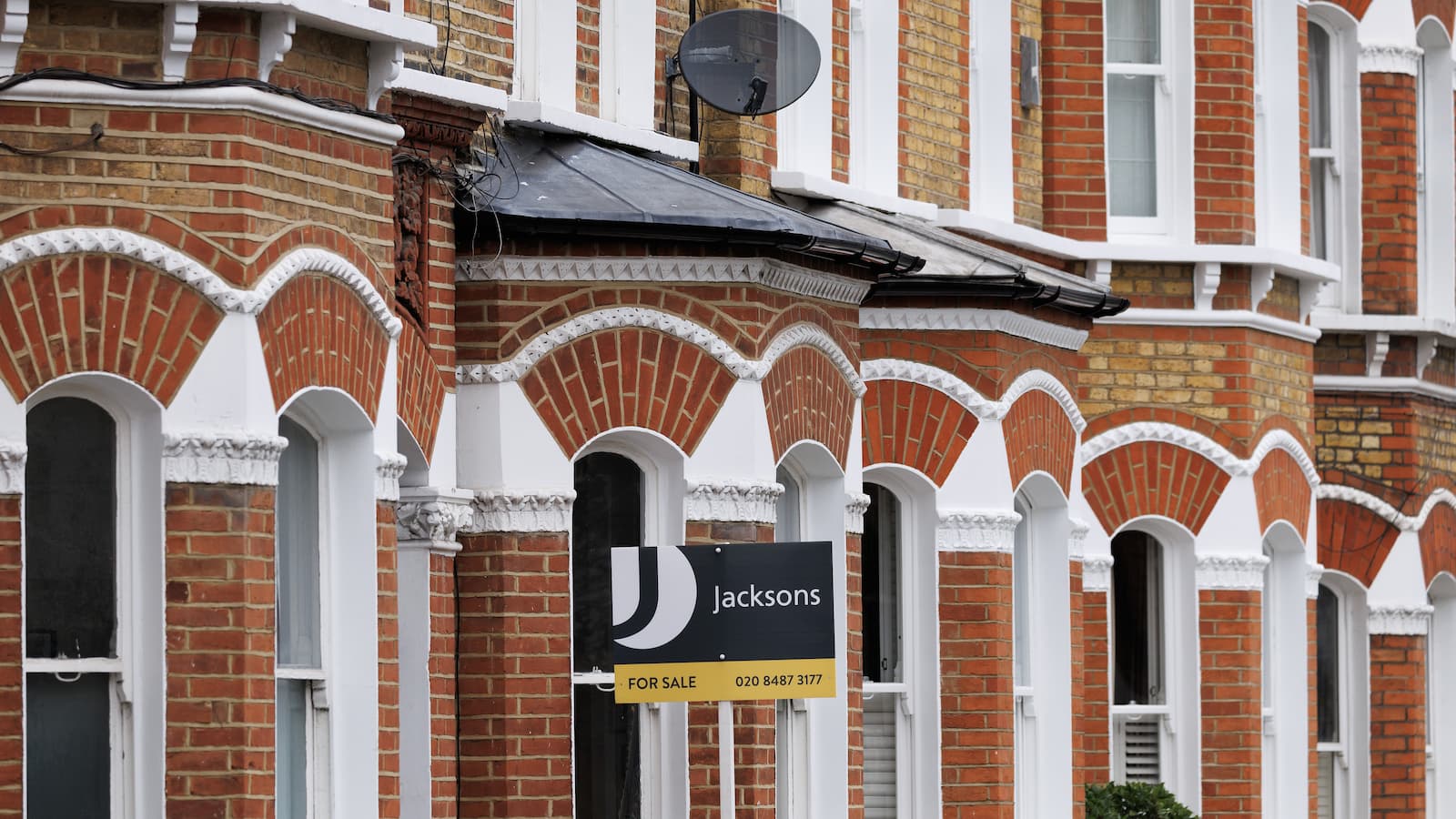Spray painting kitchen cabinets: A DIY guide to get a factory like finish
Spray painting kitchen cabinets will give them a professional new look, help save the planet and save you some serious money

When it's time for a kitchen makeover, spray painting kitchen cabinets is a cost effective way to transform the heart of your home. It can take your kitchen from tired and dated to fresh and contemporary for the fraction of the cost of a new kitchen.
Painting kitchen cabinets is a task any DIYer can take on, simply choose a cool colour, invest in a paint sprayer and watch the transformation unfold in front of your eyes. Here we give you the lowdown on what equipment you need, how to set up and spray and the pros and cons of opting for a spray paint finish.

With The Paint Shed having evolved from painting contractors to retailers, Michael has years of experience within the painting industry, using this expertise to influence his own DIY projects using the best possible tools and materials.
Spray painting kitchen cabinets: Why it's a good idea
Painted kitchen cabinets come with a smooth, durable, professional looking finish that can only be achieved with a paint sprayer. Using a mini roller or paint brush will give a decent finish, but they won’t leave you with a factory like finish.
But, it's not just the finish that makes spraying kitchen cabinets a smart choice, as Michael Rolland, paint expert and Managing Director at The Paint Shed reveals, “Spray painting is a good option for kitchen cabinets as it’s much faster than other techniques, especially if you can remove cabinet hardware first. This eliminates the need to brush around knobs and handles carefully, and in turn, saves time.”
Ensure you properly prepare and set up before starting, and you'll achieve kitchen cabinets that look like they just came out of a showroom.
What kind of paint sprayer should I use?
This will depend on the size of the project (how many cabinets to paint), budget and how often you are going to reuse a paint sprayer. If you’re looking at a one off or very occasional paint projects you don't want to be splashing out on an expensive paint sprayer. A HVLP (High Volume Low Pressure) spray gun like this HYCHIKA 600W HVLP Electric Paint Sprayer from Amazon will get the job done.
But if you have a large project and use for a paint sprayer on other DIY projects an airless sprayer is typically a better option. But, you will need a much heavier investment to get a decent one.
How to spray paint kitchen cabinets
If new to paint spraying make sure to do some practice runs before starting on your kitchen cabinets. Make sure to wear a face mask and gloves when spraying.
1. Prep your kitchen
There are a few options here, remove doors, drawers, shelves and cabinets to paint elsewhere or just remove doors/drawers/shelves and leave cabinets in situ. This is the more common and often the easier option. If you choose to do this, use masking tape and plastic sheets to mask off all areas that you don’t want spraying.
2. Remove hardware and clean
First remove any hardware, i.e hinges and handles, and then use sugar soap to clean and degrease all surfaces to be painted. Wipe down with a damp cloth to remove any residue and leave to dry.
3. Sand surfaces
Get a fine grit sandpaper – 180-220 is good – and rub down all parts of the surfaces that are going to be painted. If painting glossy cabinets try to ensure there are no glossy surfaces exposed. When finished, wipe down with a damp cloth to get rid of any dust. The better the prep the better the adhesion of the paint.
4. Set up to spray
You will need a well ventilated room/area to spray in i.e. an open door or window. Put up plastic sheets to stop spray straying onto surfaces and set up a table in the middle of the room.
Now get a box or similar to place the door/drawers on. You can add a rotating turntable like this Multi-use Heavy Duty 360° Rotating Swivel Stand Turntable from Amazon to rotate the door/drawer/shelves for easier painting.
If spraying cabinets raise off the ground a few inches – use wooden blocks or similar – but make sure the cabinet is steady. If spraying in situ, ensure all surfaces are covered including the floor and ceiling.
5. Spray paint
Place the door/drawer/shelf on the box, start with the back (if painting). Hold the nozzle 8-12 inches away from the surface and use even consistent strokes to apply a thin layer of paint. Now place the door/drawer/shelf away from the spraying area and leave to dry as per the manufacturers recommendation. Repeat for all that's being painted.
Once dry, paint the top, starting with the edges and work across the surface to the other edge. When dry, repeat the complete process, two coats should be enough.
When painting cabinets start inside and do the back panel first, then the sides and the front edges, followed by the outside and leave to dry.
FAQs
What paint should I use to spray paint kitchen cabinets?
There’s a lot of options when choosing paint for spraying kitchen cabinets, but you want something hard-wearing and durable in your chosen colour. Rolland suggests, “One of the best paint options to use when spray painting kitchen cabinets is Zinsser Allcoat Exterior Matt Water Based or Zinsser Allcoat Water Based Exterior Satin. Zinsser Allcoat is a multi-surface durable paint, making it perfect for use on kitchen cabinets as they are exposed to a lot of general wear and tear.” These paints are self-priming and available in various finishes and colours.
Other alternatives include the Rustoleum kitchen cupboard paint range available from Amazon and the Frenchic Al Fresco range if you are looking for a chalk like finish.
What colour should I spray my kitchen cabinets?
Obviously white is a popular colour as it fits with almost any other colour. But, if your kitchen has a modern, minimalist design style then bold colours such navy blue, black or something bright and vivid are often good choices. If you have a more traditional rustic style kitchen then you want to try more subtle tones. Check out our painted kitchen cabinet ideas to give you inspiration on your colour choice.
DIY or professional - which costs more?
When it comes to budgeting for a kitchen respray cost, a DIY route will naturally be the cheaper option, but will involve you having the time and skills to complete the job. If you want to call in a professional, cost will vary depending on the size of your kitchen, the layout and the condition of your doors.
Be sure to get a number of quotes in before you make your final decision.
What are the downsides to spray painting kitchen cabinets?
There are a lot of plus points to spray painting kitchen cabinets, but there are drawbacks, shares Rolland, “One downside to using spray paint is that while it offers a smooth overall finish, being able to achieve a consistent coverage can be difficult. Unlike with brush strokes where you can see where paint is applied, when spray painting, it is necessary to use multiple light coats which requires careful technique.”
Annoyingly, if you do make a mistake, you need to prep and paint again. We suggest if you’re a spray paint novice that you perform a few practice runs on waste wood to hone your skills. And, you will need a space where you can spray the cabinets and leave to dry.
If you’re getting a professional finish on your kitchen cabinets you want to make sure that the rest of the kitchen looks good as well. Check out 11 kitchen cabinet lighting ideas and how to adjust kitchen cabinet doors to get it spot on.
Get the Homebuilding & Renovating Newsletter
Bring your dream home to life with expert advice, how to guides and design inspiration. Sign up for our newsletter and get two free tickets to a Homebuilding & Renovating Show near you.
Steve Jenkins is a freelance content creator with over two decades of experience working in digital and print and was previously the DIY content editor for Homebuilding & Renovating.
He is a keen DIYer with over 20 years of experience in transforming and renovating the many homes he has lived in. He specialises in painting and decorating, but has a wide range of skills gleaned from working in the building trade for around 10 years and spending time at night school learning how to plaster and plumb.
He has fitted kitchens, tiled bathrooms and kitchens, laid many floors, built partition walls, plastered walls, plumbed in bathrooms, worked on loft conversions and much more. And when he's not sure how to tackle a DIY project he has a wide network of friends – including plumbers, gas engineers, tilers, carpenters, painters and decorators, electricians and builders – in the trade to call upon.

